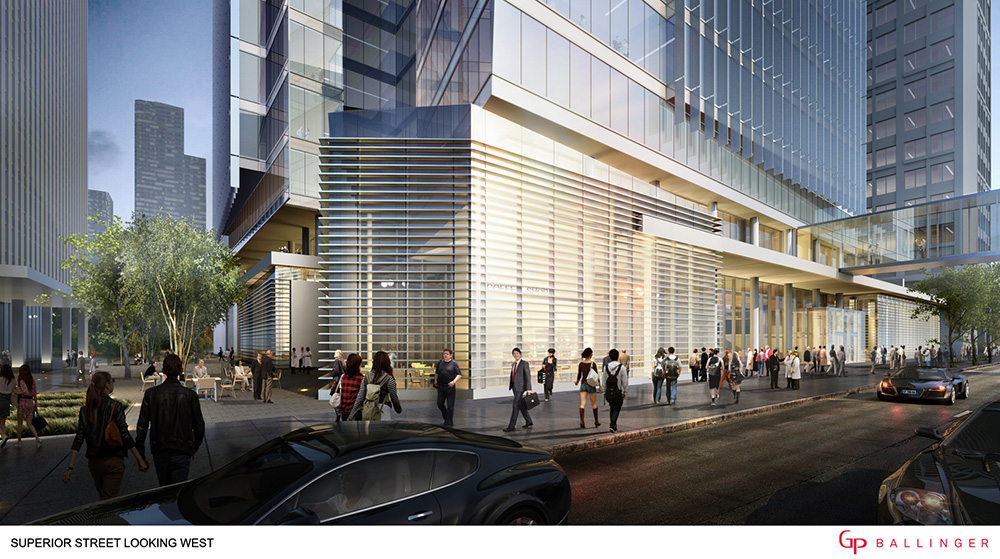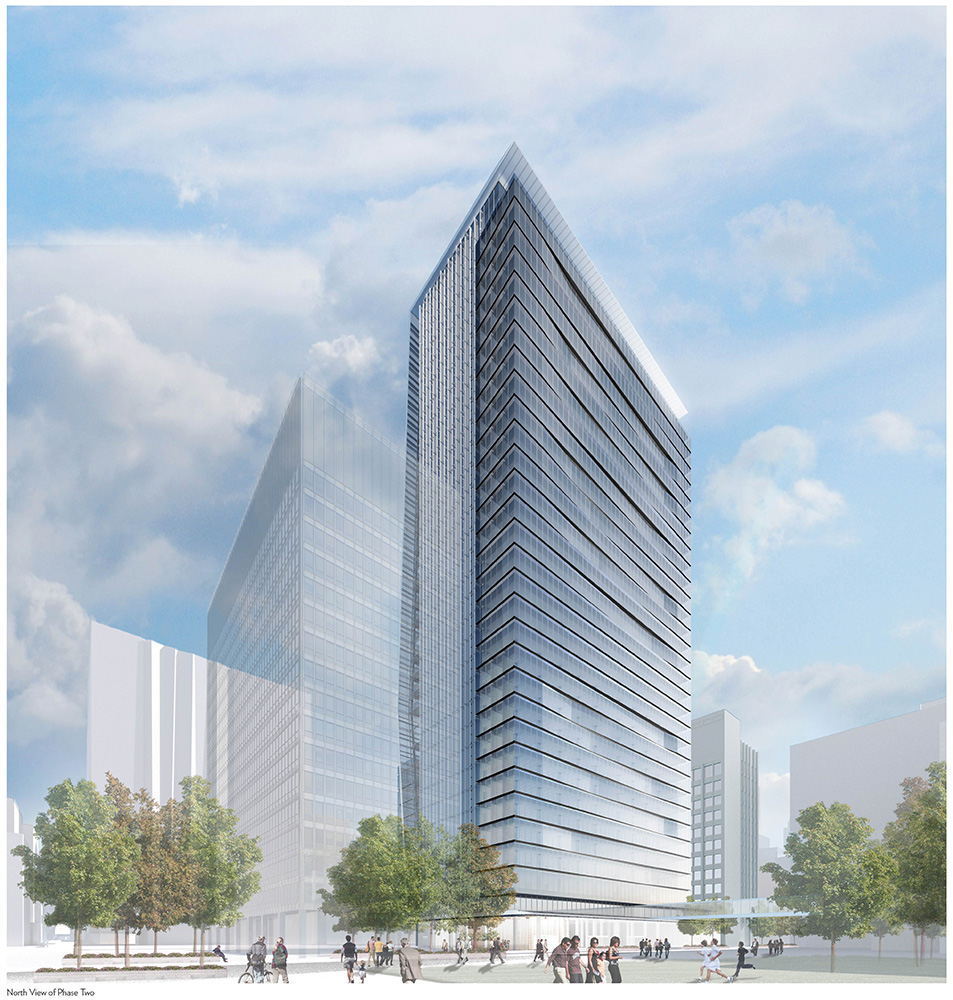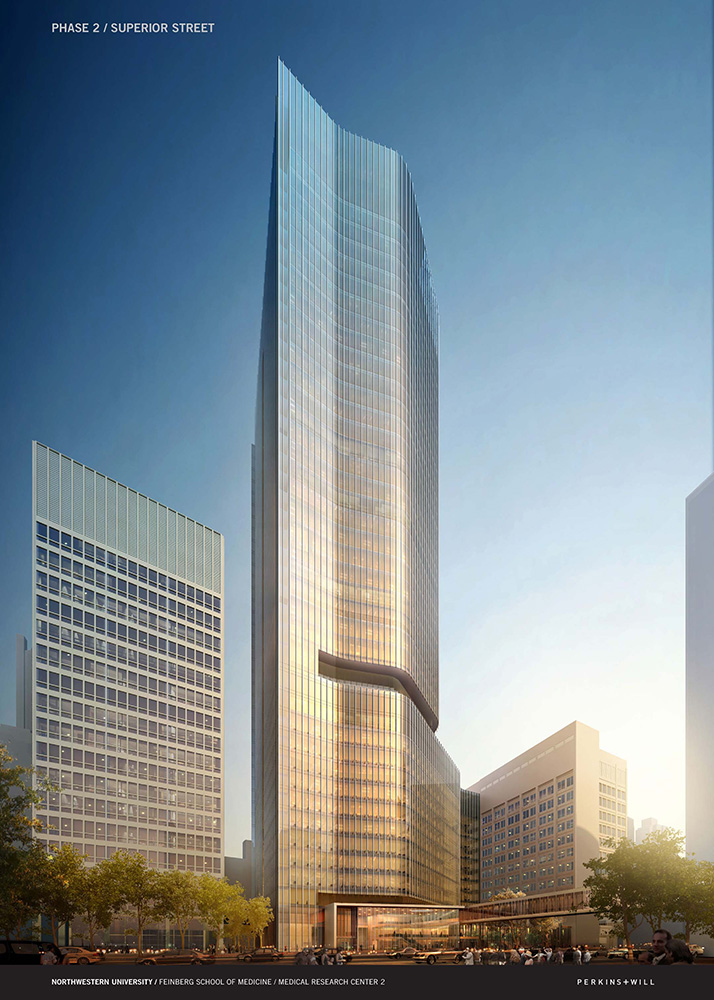After Prentice: Northwestern shows finalists’ designs for new building
By Lee Bey

After Prentice: Northwestern shows finalists’ designs for new building
By Lee Bey
The finalists include three Chicago firms: Goettsch Partners is working with Philadelphia company Ballinger; Adrian Smith and Gordon Gill Architecture is partnered with Payette from
Boston; and Perkins and Will is going at it alone.
To make way for the building, dubbed the Feinberg School of Medicine Medical Research Center, architect Bertrand Goldberg’s Prentice Women’s Hospital is being torn down.
The winning design will be built in two phases. Construction of the 600,000 sq ft first phase is expected to begin in 2015. The space would then double — and the lab tower would grow substantially, as the Goettsch/Ballinger rendering above shows — in a planned second stage.
So what can we make of all this?
One look at the submissions shows why the university never would have reused the old Prentice building. Not that it couldn’t have been, but the proposals show Northwestern is looking for a big, efficient, machine-like building somewhere between a hotel and office building in space, amenities and design. Prentice, with its concrete quatrefoil shape and relatively small size, was never going to be that.
Judging projects based on renderings is always risky, but here are some images of the proposals.
Shown above, the Goettsch design seems to me unimpressive on first glance. The angled windows reminding me of Helmut Jahn’s two-decade-old 120 N. LaSalle Street. But that’s the problem with renderings — in this view below where the building meets the street, the design and the facade seem to have a lot more going for them.

Next is Adrian Smith and Gordon Gill’s submission, which depicts the building after the second phase is complete. The undulations in the facade are good and one of several elements designed to bring natural light into the core of the building.


Next, Perkins and Will’s facade design is the most sculptural of the three, with the curves seeming to acknowledge the old Prentice building.

This next view shows more of a separation between the tower and its base.

The new structure will be a complex building, the success of which should not be judged as a beauty contest. The true heir to Goldberg’s advanced-for-it’s-time Prentice would be a structure that is a game changer among its building type; one so technologically advanced in architecture, engineering, energy usage and function that it couldn’t have been built, say, five years ago.
It’s too early to tell which of these designs are able to do that.
Northwestern has been soliciting public input on the designs, which you can see and contribute to here. Trustees are expected to make their choice within a month.
The designs and models will remain on public display at the Lurie Medical Research Center, 303 E. Superior until 7 p.m.





